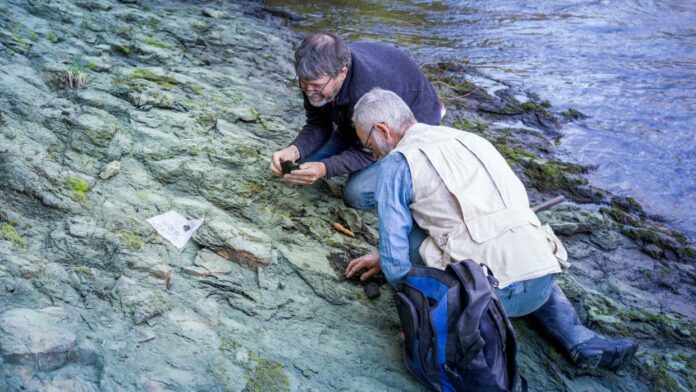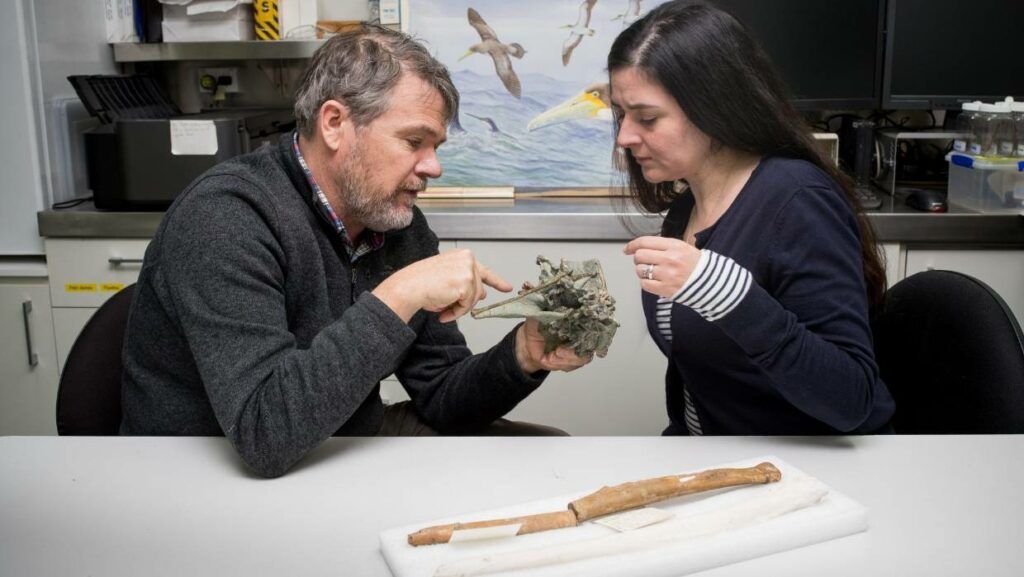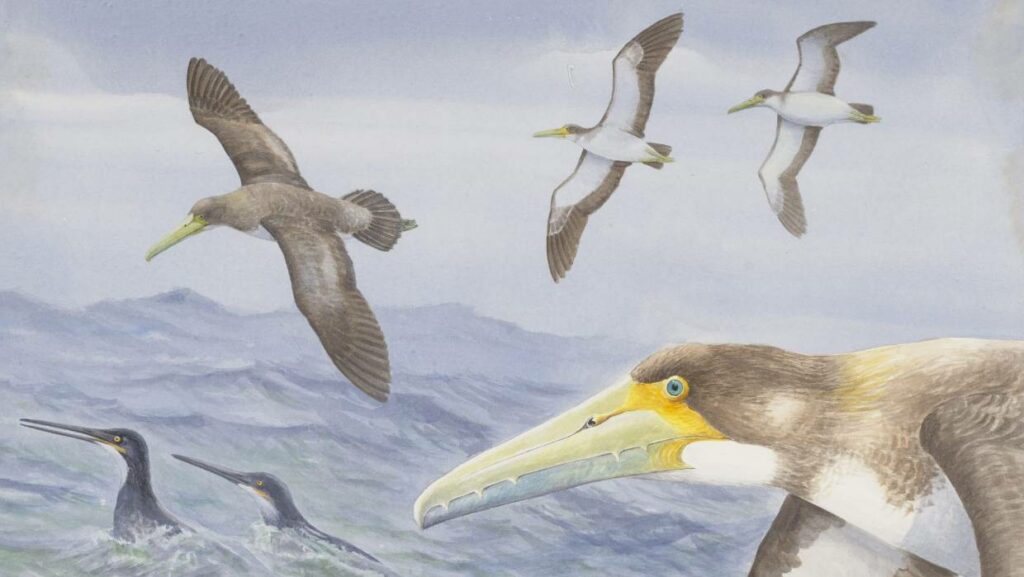
One of the world’s oldest bird species has been discovered at the same North Canterbury site a monster penguin fossil was found.
Bony-toothed birds (Pelagornithids), an ancient family of huge seafaring birds, were thought to have evolved in the Northern Hemisphere, until the discovery of the family’s oldest but smallest member in New Zealand.
At 62 million years old, the newly-discovered Protodontopteryx the is one of the oldest named bird species in the world, inhabiting New Zealand soon after the end of the dinosaurs.

While its descendants were some of the biggest flying birds ever, with wingspans in excess of 5 metres, Protodontopteryx was only the size of an average gull. Like other members of its family, the seabird had bony, tooth-like projections on the edge of its beak. The seabird fossil was identified by the same team that recently announced the discovery of a 1.6 meter-high giant penguin from the same site.
Amateur paleontologist Leigh Love discovered both the penguin and the partial Protodontopteryx skeleton just months apart at the Waipara Greensand fossil site.
The bird was named Protodontopteryx ruthae after Love’s wife Ruth.
Scofield said the age of the fossilized bones suggested pelagornithids evolved in the Southern Hemisphere back when New Zealand had a tropical climate and a sea temperature of about 25 degrees Celsius.
“While this bird was relatively small, the impact of its discovery is hugely significant in our understanding of this family. Until we found this skeleton, all the really old pelagornithids had been found in the Northern Hemisphere, so everyone thought they’d evolved up there.”
Mayr said the discovery of Protodontopteryx was “truly amazing and unexpected”.
“Not only is the fossil one of the most complete specimens of a pseudotoothed bird, but it also shows a number of unexpected skeletal features that contribute to a better understanding of the evolution of these enigmatic birds.”
Later pelagornithid species evolved to soar over oceans with some species measuring up to 6.4 meters across.

Protodontopteryx’s skeleton suggests it was less suited for long-distance soaring than later pelagornithids and probably covered much shorter ranges. Its short, broad pseudoteeth were likely designed for catching fish. Later species had needle-like pseudoteeth which were likely used to catch soft-bodied prey like squid.
The last pelagornithid species died out 2.5 million years ago, just before modern humans evolved.
The Waipara Greensand site has yielded several important scientific discoveries for Love in recent years. In 2014 he made headlines when a fossil he found was recognised as belonging to an unknown group of flying seabirds and was named Australornis lovei.
The following year Love discovered the world’s oldest tropicbird fossil, which also revealed the true origins of a bird which until his discovery had only ever been found in the northern hemisphere.
Some of the discoveries, including the Protodontopteryx fossil, will be displayed in an exhibition about ancient New Zealand at the Canterbury Museum later this year.
Source - stuff




























